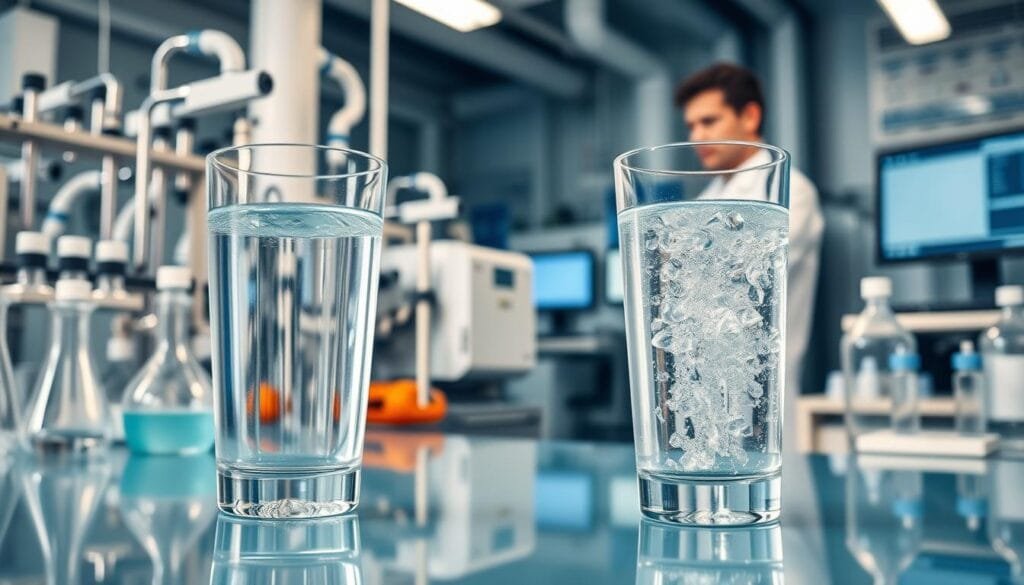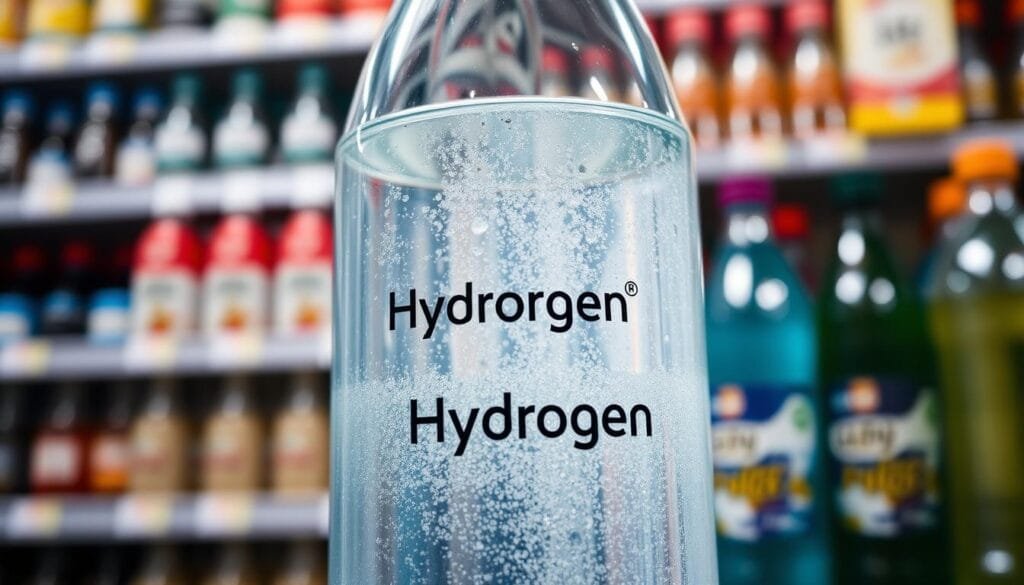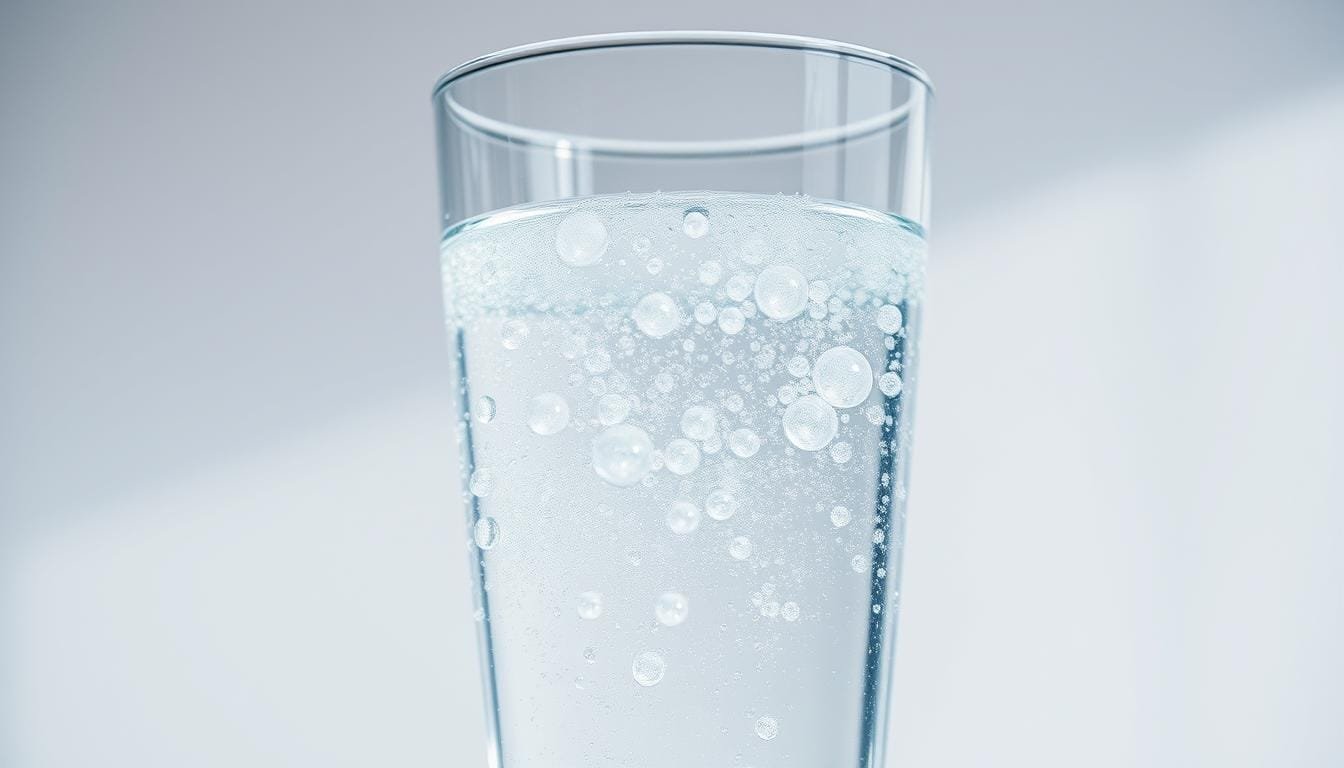Currently Empty: RM0.00
Can a fizzy can really cut fatigue and speed recovery, or is this just another wellness trend?
This article offers a clear, balanced look at hydrogen-enriched water and whether it helps active people in Malaysia. It explains what the product is, why some brands sell cans and pouches, and how costs like a 30-pack at about $90 fit into training budgets.
Readers will see the best available research on lactate, perceived tiredness, and short-term effects, plus notes on safety: the FDA considers the drink GRAS, and plain water still anchors good hydration.
Practical tips include choosing non-permeable packaging and drinking quickly after opening to keep gas levels high. Malaysian readers may contact Wellness Concept via WhatsApp at +60123822655 during business hours (Mon–Fri 9:30 am–6:30 pm; Sat–Sun 10 am–5 pm) for guidance on options that match training needs and budget.
Key Takeaways
- Hydrogen-enriched water is regular water with added gas; some small trials show lower blood lactate and less muscle fatigue.
- Evidence is mixed; short studies in healthy people often show no clear change in oxidative markers.
- FDA labels the product GRAS, but plain water remains the best baseline for hydration.
- Packaging and freshness matter: use non-permeable containers and drink soon after opening.
- Cost and convenience vary; compare cans, pouches, tablets, and machines before buying.
- Contact Wellness Concept on WhatsApp (+60123822655) during listed hours for local advice.
Why Malaysian athletes are asking if hydrogen water boosts performance or is just hype
In Malaysia’s heat, athletes wonder if an added gas product can reduce inflammation and speed recovery.
Hot, humid training, traffic pollution, tight race schedules, and urban life raise physical and mental stress levels. These factors can increase oxidative stress, which many link to fatigue and slower recovery.
Local interest has grown because makers claim the drink targets oxidative damage and inflammation. Some teams try it during heavy training blocks to chase small gains.
- Many seek marginal gains beyond smart hydration, sleep, and nutrition.
- Cost and convenience shape whether a trial makes sense for clubs and cyclists.
- Timing—tournaments or multi-day events—often guides short-term use.
Reality check: current research is small and mixed. A few short studies show possible benefits, but findings are inconsistent. Athletes should weigh the modest claims against proven recovery habits.
| Factor | Why it matters | Practical note |
|---|---|---|
| Heat & humidity | Increases physiological strain | Focus on cooling and rehydration first |
| Urban pollution | May raise oxidative markers | Limit high-load sessions in peak traffic |
| Competition schedule | Short recovery windows | Consider targeted, time-limited trials |
“Interest blends curiosity and scepticism; later sections examine mechanisms, study outcomes, and practical guidance.”
What is hydrogen water and how is it made?
Before buying a trial pack, readers should know what these infused beverages actually contain.
Hydrogen-rich water explained: molecular hydrogen, free radicals, and oxidative stress
Hydrogen water is plain water with extra dissolved hydrogen molecules that are not bound to oxygen. These extra molecules can move through tissues and reach cells more easily than bonded hydrogen.
Some researchers suggest molecular hydrogen may selectively neutralize certain free radicals linked to oxidative stress without stopping normal cell signals. Evidence is mixed: trials in sick and healthy groups show different effects.
Production methods: electrolysis, infused gas, tablets, machines, and packaged cans
Manufacturers use three main approaches: factory infusion of pressurized gas into non-permeable cans or pouches, home electrolysis units that split and dissolve hydrogen back into water, and effervescent tablets that generate gas on the go.
Packaging matters: choose non-permeable containers, check manufacture and consume-by dates, and drink soon after opening to limit loss of hydrogen molecules to air.
Availability and cost considerations in Malaysia
Some brands recommend about three small cans per day; a 30-pack can cost roughly $90. Machines and tablets spread upfront cost over time and may suit frequent consumption.
| Option | Pros | Cons |
|---|---|---|
| Cans/pouches | Convenient, consistent H2 label | Higher per-serve cost |
| Electrolysis machines | Lower long-term cost | Upfront price, maintenance |
| Effervescent tablets | Portable, flexible | Variable concentration |
“No industry standard for dissolved concentration exists; labels that list H2 levels help comparison.”
Hydrogen Water for Athletes: Performance Booster or Hype?
Small trials have tested whether dissolved gas in drinks can change fatigue and recovery after tough sessions.
Reduced lactate and less muscle fatigue
Several small studies reported lower post-exercise blood lactate and reduced muscle fatigue after consuming enriched drinks. In one trial of ten male soccer players, 1,500 ml taken around exercise cut lactate and subjective tiredness versus placebo.
Short-term performance in cyclists, runners, and teams
A two-week trial with eight male cyclists who drank 2 liters daily found slightly higher sprint power than controls. Botek et al. (2019) noted better ventilatory responses and lower perceived exertion in team-sport settings.
Recovery: inflammation, antioxidant activity, and perceived exertion
Sim et al. (2020) reported reduced inflammation markers in a randomized trial. Systematic reviews (Dhillon et al., 2024) suggest anti‑inflammatory and antioxidant effects but highlight inconsistent dosing and small samples.
- What matters: gains are modest and tied to markers like blood lactate and self-reported fatigue.
- Common protocol: drink close to high‑intensity sessions in trials that showed benefit.
- Limitations: short durations and few participants mean findings need larger replication.
“Results are encouraging but preliminary; athletes should test the approach during targeted training windows.”
What the research doesn’t settle yet: mixed findings and study limitations
Many trials have tested dissolved-gas drinks, but results still leave key questions unanswered.
Small samples and short timelines make it hard to generalize. Most studies run days to weeks and include only a few dozen people. That reduces confidence in reported effects and limits what coaches can apply to wider training groups.
Inconsistent dosing and product levels add another problem. Labels vary and there is no agreed dose. Two similar cans may deliver different amounts, so comparing trials is difficult.
Notable null result
A four-week study of 26 healthy adults who drank 600 ml per day found no significant drops in oxidative stress markers versus placebo. This shows that not everyone sees measurable benefits.
| Limitation | Why it matters | Practical takeaway |
|---|---|---|
| Small sample sizes | Low statistical power | Interpret positive effects with caution |
| Short trials | No long-term data | Benefits may not last |
| Variable concentrations | Hard to compare studies | Choose products with labeled levels |
“Current evidence is provisional; careful self-testing and attention to study design are essential.”
Readers should read research closely. Look at sample size, duration, outcomes, and the group studied. Individuals may experiment while keeping proven recovery habits as the foundation.
Hydrogen water vs. plain water and other recovery strategies
Simple hydration and good sleep remain the pillars that most directly affect training and recovery.
Hydration fundamentals: plain water is the healthiest baseline for thermoregulation, sweat replacement, and daily training in Malaysia’s heat. It supports blood flow, cooling, and basic metabolic function without cost or side effects.
Antioxidants and training adaptations
Exercise produces reactive oxygen species that act as signals for muscle and metabolic gains. High-dose antioxidant supplements can blunt that signalling and reduce long-term adaptations.
That means athletes should be cautious with continuous, heavy antioxidant use. Timing and dose matter if the goal is to let adaptive processes run while limiting excessive inflammation.
Where a targeted supplement may fit
Hydrogen water may serve as a low-intensity antioxidant approach used selectively—around tournaments, long travel days, or unusually heavy training blocks.
- Prioritise sleep, nutrient-dense meals, and electrolyte-aware drinking.
- Use the product strategically, not every day, to avoid blunting adaptation.
- Track outcomes: session RPE, heart-rate recovery, and sleep quality to judge benefit.
“Studies show benefits are most clear in short-term markers like lactate and perceived fatigue, not broad seasonal gains.”
Decide if marginal benefits justify cost compared with proven basics. Those curious can read product options and local guidance at Wellness Concept before trialing during high-stress periods.
Safety, standards, and quality control
Good standards and clear labelling make it easier to judge whether a given supplement will keep promised levels until you drink it.
GRAS status, general safety, and clinical advice
Regulatory note: The product has GRAS status and has been considered safe in trials with few reported serious events. This gives general reassurance to most people in Malaysia who try it.
People with chronic conditions, those who are pregnant, and anyone on steady therapy should consult a clinician before adding new products to their routine.

Choosing products: packaging, freshness, and labelled levels
Concentrations vary widely because no universal standard exists. Pick brands that disclose H2 levels and offer third‑party testing when possible.
Practical checks: prefer non‑permeable cans or pouches, verify production and expiry dates, and drink soon after opening to preserve dissolved gas.
Effervescent tablets and home machines can work, but actual retention depends on temperature, dissolution method, and fast consumption.
“Product choice and handling often matter as much as the ingredient itself for consistent results.”
| Quality point | Why it matters | Quick tip |
|---|---|---|
| Non‑permeable packaging | Reduces gas loss | Choose lined cans or foil pouches |
| Labelled H2 levels | Allows comparison | Prefer explicit mg/L claims |
| Freshness | Retention declines after opening | Consume promptly |
- Start with conservative consumption and track subjective effects like soreness and perceived recovery.
- Remember that some trials showed reduced inflammation markers while others did not; expectations should be modest.
- Use any product as part of a broader recovery plan, not as a standalone therapy.
Malaysia-specific factors for athletes
High temperatures and sticky humidity push the cardiovascular system harder during exercise in urban Malaysia.
Hot, humid conditions raise thermal strain and sweat rates, which can increase oxidative stress and inflammation after intense activity. That makes planning hydration and cooling non-negotiable.
Urban air pollution adds another burden. Exposure to traffic fumes and particulate matter can elevate oxidative markers, so recovery nutrition and careful timing of sessions matter more in cities.
Practical local tips
Hydration planning, cooling, and electrolytes should be the first line of defence during long training days and tournaments.
- Schedule hard work in cooler hours and use shade, ice towels, and fans during breaks.
- Monitor heart-rate drift, perceived exertion, and sleep quality to judge recovery needs.
- View hydrogen water as an optional adjunct during peak heat or multi-game days, not a daily replacement for core strategies.
“Environmental management is the priority; targeted tools can fill gaps during the most taxing blocks.”
How to use hydrogen water: practical guidance for athletes
A pragmatic trial on select high-load days can show whether a specialty drink changes fatigue and next-day readiness.
When to try it: Use the drink around intense sessions, tournament weekends, back-to-back matches, or long travel days. Short studies often time intake close to training and report lower lactate and less perceived tiredness.
Timing, quantity, and scenarios
Common protocols in trials used about 1.5–2.0 liters per day, though no firm standard exists.
Start lower, monitor response, then adjust. Drink from non‑permeable cans or sealed pouches and consume soon after opening to preserve dissolved gas levels.
Who may benefit — and who might not
Well-trained cyclists and team‑sport players often notice short-term gains in repeated high-intensity efforts.
Recreational exercisers or those with already optimized sleep, nutrition, and electrolytes may see minimal added benefits.
| Scenario | Suggested approach | What to track |
|---|---|---|
| Back-to-back games | Use near-match and post-match | RPE, soreness, split consistency |
| Heavy training block | Trial on peak days only | HR recovery, morning readiness |
| Long travel | Use during travel plus first recovery day | Sleep, fatigue, muscle soreness |
“Test strategically and keep plain water, electrolytes, sleep, and nutrition as the foundation.”
If readers want help picking formats or planning a short trial, contact Wellness Concept on WhatsApp at +60123822655 (Mon–Fri 9:30 am–6:30 pm; Sat–Sun 10 am–5 pm). For background on related topics, see this guide.
Shop trusted hydrogen water solutions in Malaysia
A smart buying decision begins with packaging integrity, clear dosing labels, and a short, budgeted trial period.

What to look for: choose non‑permeable cans or foil pouches to reduce gas loss. Check labelled mg/L claims and recent production dates. Freshness and sealed packaging support more consistent intake.
Contact Wellness Concept on WhatsApp: +60123822655 for product guidance
Message Wellness Concept on WhatsApp at +60123822655 for personalised advice based on sport, schedule, and storage needs.
Business hours: Monday–Friday 9:30 am–6:30 pm; Saturday–Sunday 10 am–5 pm.
Formats and budgeting
Pre‑filled cans and pouches are convenient. Tablets are portable. Home electrolysis devices suit frequent use. Some brands suggest multiple daily servings, so plan a 2–4 week trial to judge value.
| Format | Pros | Cons |
|---|---|---|
| Cans / Pouches | Consistent labelled doses; ready to drink | Higher per‑serve cost |
| Effervescent Tablets | Portable; flexible dosing | Variable concentration after mixing |
| Electrolysis Devices | Lower long‑term cost; on‑demand | Upfront price; maintenance |
Reminder: plain water stays the foundation of hydration and health. Use specialty options as an occasional adjunct, keep receipts, and log perceived effects during a trial to make a data‑driven choice.
Conclusion
For Malaysian sportspeople, the short evidence base suggests modest, short‑term gains from hydrogen water in markers such as lactate, perceived recovery, and some inflammation signals. Results are promising but limited by small samples and mixed outcomes from other research.
Plain water, sleep, nutrition, and smart training remain the core drivers of better performance and health. High‑dose antioxidant therapy can blunt long‑term adaptations, so specialty drinks should be used strategically, not daily.
Use quality products, track simple metrics (RPE, soreness, HR recovery), and consult a clinician if on regular medication. For tailored advice and product guidance, contact Wellness Concept on WhatsApp at +60123822655 (Mon–Fri 9:30 am–6:30 pm; Sat–Sun 10 am–5 pm). Studies will evolve; pairing fundamentals with cautious, data‑informed trials is the smartest path.
FAQ
What is hydrogen-rich water and how does it relate to oxidative stress?
It is ordinary H2O infused with molecular hydrogen gas. Small studies suggest those extra molecules may act as selective antioxidants, neutralizing some free radicals and lowering markers of oxidative stress after intense exercise.
How is hydrogen-rich water made and what production methods exist?
Common methods include electrolysis (splitting water to release H2), dissolving hydrogen gas into bottles or cans, effervescent tablets that react to release H2, and home or commercial hydrogen generators. Each method affects concentration and shelf life.
Are these products available in Malaysia and are they costly?
Yes, packaged cans, tablets, and portable generators are sold locally. Prices vary by brand, packaging, and labeled H2 concentration; single-use cans cost more per dose than tablets or home machines.
Do trials show that this water reduces lactate or muscle fatigue during exercise?
Some small trials report lower blood lactate and reduced markers of muscle damage after intense bouts, but results are inconsistent and often limited by sample size and study design.
Can drinking it improve short-term performance for cyclists, runners, or team-sport athletes?
A few studies show modest benefits in specific protocols, such as time trials or repeated sprints. However, many trials show no clear improvement in measurable performance, so effects are not guaranteed.
Does it speed recovery by reducing inflammation or perceived exertion?
Evidence hints at lower inflammation markers and reduced perceived soreness in some participants. These outcomes vary by study and athlete profile, so individual responses differ.
What are the main limits of current research?
Common issues include small sample sizes, short intervention periods, heterogeneous dosing, inconsistent H2 concentrations, and mixed populations. Those factors make it hard to draw firm conclusions.
How does it compare with plain water and other recovery strategies?
Proper hydration with plain water remains essential and noncontroversial. Supplements, sleep, nutrition, and periodized training have stronger, better-documented effects. Hydrogen-rich options might be an adjunct for some athletes, not a replacement.
Could antioxidant activity blunt training adaptations?
High-dose antioxidant interventions sometimes reduce beneficial training adaptations by dampening exercise-induced signaling. Evidence is limited for H2 specifically, so athletes should be cautious during heavy adaptation blocks.
Is it safe and regulated? Who should consult a clinician?
Generally regarded as safe in small studies, but quality and labeling vary. Athletes with medical conditions, those on medications, or pregnant or breastfeeding people should check with a clinician before regular use.
How can athletes choose a quality product?
Look for non-permeable packaging (metal cans or aluminum-lined pouches), recent manufacture dates, clear H2 concentration labeling, and reputable sellers. Freshness matters because gas escapes over time.
Are there Malaysia-specific considerations for use during training and competition?
Hot, humid conditions increase oxidative stress and hydration needs. Athletes training in Malaysia’s climate should prioritize fluid replacement and heat management; any adjunct like hydrogen-rich options is secondary.
When should an athlete drink it—timing and quantity?
Studies use varied timing: before exercise, immediately after, or during recovery. Practical approaches include a dose pre-event for acute effects and post-session for recovery, but precise optimal timing and quantity remain unclear.
Who is most likely to benefit and who may not notice a difference?
Those facing repeated high-intensity efforts, congested schedules, or pronounced oxidative stress might see benefits. Well-trained athletes with robust recovery practices may notice little change.
Where can athletes in Malaysia get trusted products and support?
Local suppliers and health retailers sell reputable brands. For product guidance, contact Wellness Concept on WhatsApp: +60123822655 during business hours (Mon–Fri 9:30 am–6:30 pm; Sat–Sun 10 am–5 pm).


